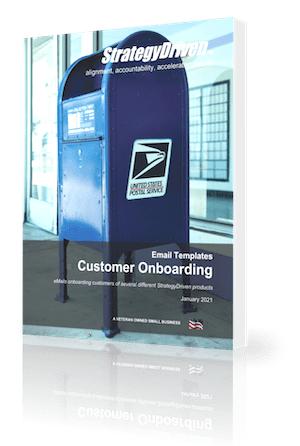Turning On-Site Challenges Into Business Opportunities

Running a business that requires on-site work—whether construction, maintenance, event management, or any hands-on service—often involves facing a variety of challenges. These challenges can disrupt schedules, increase costs, reduce productivity, and ultimately impact profitability. However, what many businesses fail to realize is that these challenges don’t have to be mere obstacles. When approached with the right mindset and strategies, on-site difficulties can become opportunities to innovate, improve processes, and build competitive advantages.
In this blog, we’ll explore common on-site challenges and how businesses can turn them into opportunities for growth and success.
Understanding Common On-Site Challenges
Before transforming challenges into opportunities, it’s crucial to understand the types of difficulties typically encountered on-site:
- Unpredictable Weather Conditions: Rain, storms, or extreme heat can delay work or damage materials.
- Logistical Complexities: Managing materials, equipment, and workforce efficiently on-site is often complicated.
- Communication Gaps: Coordination between the office, on-site teams, and subcontractors can be unclear or slow.
- Safety Concerns: Maintaining safety compliance is essential, but can slow down operations.
- Quality Control Issues: Ensuring work meets standards amidst various moving parts can be difficult.
- Technology Limitations: Lack of digital tools can hinder real-time updates and decision-making.
While these challenges seem daunting, businesses that address them proactively can turn each into an opportunity to differentiate themselves.
Opportunity #1: Enhancing Operational Efficiency Through Technology
One of the biggest game-changers for on-site operations is the integration of technology. Tools designed to improve workflow, communication, and data management can significantly reduce delays and errors.
For example, digital workforce management platforms like Fieldster offer real-time tracking, scheduling, and communication capabilities. With such platforms, managers can:
- Monitor project progress instantly.
- Allocate resources more efficiently.
- Communicate changes immediately with teams.
By adopting technology, businesses not only solve logistical and communication issues but also position themselves as innovative and forward-thinking—qualities highly attractive to clients and partners.
Opportunity #2: Building Stronger Client Relationships Through Transparency
Clients often get frustrated when they are kept in the dark about on-site delays or issues. Businesses that use challenges as an opportunity to increase transparency can build stronger trust and loyalty.
When companies openly communicate problems and share solutions, clients feel involved and valued. Providing regular updates—even when things don’t go perfectly—demonstrates professionalism and integrity.
Some ways to increase transparency include:
- Using project management apps with client access.
- Offering regular progress reports via email or calls.
- Inviting clients to visit sites (where feasible) for inspections.
This open approach turns a potential source of dissatisfaction into a way to deepen client engagement.
Opportunity #3: Improving Team Skills and Morale
On-site challenges often reveal gaps in skills, knowledge, or teamwork. Instead of viewing these as setbacks, businesses can use them as learning moments to improve employee capabilities and morale.
Conducting training sessions based on encountered issues helps prepare teams for future work. Encouraging team members to share ideas and solutions promotes a culture of continuous improvement.
Moreover, recognizing employees who step up during tough situations boosts morale and motivation. Over time, a skilled and confident workforce becomes a key asset that helps the business thrive despite unpredictable conditions.
Opportunity #4: Refining Risk Management and Safety Protocols
Safety is paramount on any site. Incidents and near misses are not only harmful but also costly due to downtime and insurance.
Businesses that use on-site challenges to refine their risk management strategies reduce accidents and demonstrate commitment to safety. This can be a powerful differentiator when bidding for new contracts.
Regular safety audits, updated protocols, and safety training sessions ensure compliance and minimize risks. Documenting these efforts and communicating them to clients also strengthens reputations.
Opportunity #5: Streamlining Supply Chain and Inventory Control
Delays in materials or equipment can halt an entire project. Supply chain challenges are common but manageable.
On-site difficulties related to materials should push businesses to revisit their procurement and inventory strategies. Establishing strong relationships with reliable suppliers and maintaining buffer stocks can prevent costly stoppages.
Furthermore, implementing inventory management software helps track supplies in real time, avoiding overordering or shortages.
Turning supply chain challenges into opportunities to optimize purchasing and storage reduces waste, saves money, and keeps projects on schedule.
Opportunity #6: Adapting Project Management Styles
Traditional project management methods may not always work well on-site, where conditions change rapidly. Challenges can encourage businesses to adopt more flexible and adaptive project management styles.
Agile or hybrid project management approaches enable teams to respond quickly to unforeseen events. This flexibility helps maintain momentum and meet deadlines even when conditions are less than ideal.
Regular team check-ins, iterative planning, and open feedback channels are components that improve responsiveness. Such approaches keep everyone aligned and reduce the impact of disruptions.
Opportunity #7: Gaining Competitive Advantage by Demonstrating Resilience
How a business handles challenges can make or break its reputation. Companies that successfully navigate on-site obstacles showcase resilience and reliability.
Documenting and sharing success stories about overcoming tough on-site situations builds confidence among prospective clients. This storytelling can be part of marketing strategies, demonstrating that the business doesn’t just deliver promises but also delivers despite adversity.
Being seen as a dependable problem-solver creates long-term client loyalty and opens doors to larger, more complex projects.
How to Get Started: Practical Steps
If you want to start turning on-site challenges into business opportunities, here are some actionable steps:
1. Conduct a Thorough On-site Risk Assessment: Identify the most common challenges specific to your operations.
2. Invest in Digital Solutions: Tools like Fieldster can automate scheduling, reporting, and communication.
3. Engage Your Team: Create a culture of open communication and continuous learning.
4. Enhance Client Communication: Build transparency with regular updates and involvement.
5. Review and Improve Safety and Supply Chain Protocols: Make these a priority.
6. Adopt Flexible Project Management Techniques: Stay agile and responsive.
7. Market Your Resilience: Share your successes as proof of your reliability.
Conclusion
Every business that relies on on-site work will face challenges. The difference between businesses that succeed and those that struggle lies in how they respond. By embracing challenges as opportunities to innovate, improve processes, and build trust, companies can transform obstacles into powerful business advantages.
From leveraging technology and improving transparency to enhancing team skills and risk management, there are many ways to turn on-site difficulties into opportunities for growth and success. Taking proactive steps now will pay dividends in client satisfaction, employee engagement, and overall business resilience.














Leave a Reply
Want to join the discussion?Feel free to contribute!